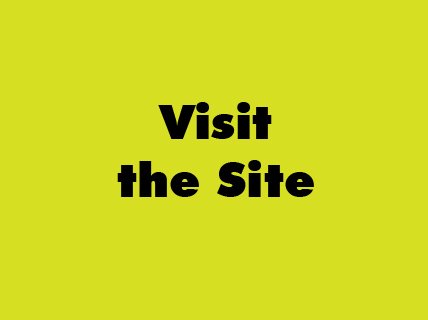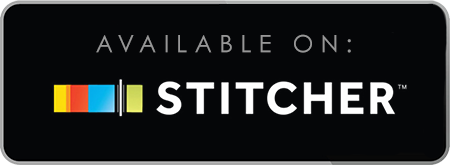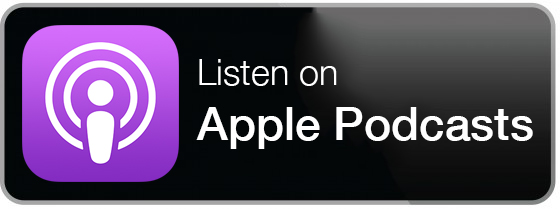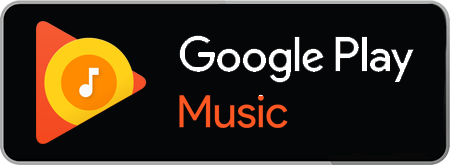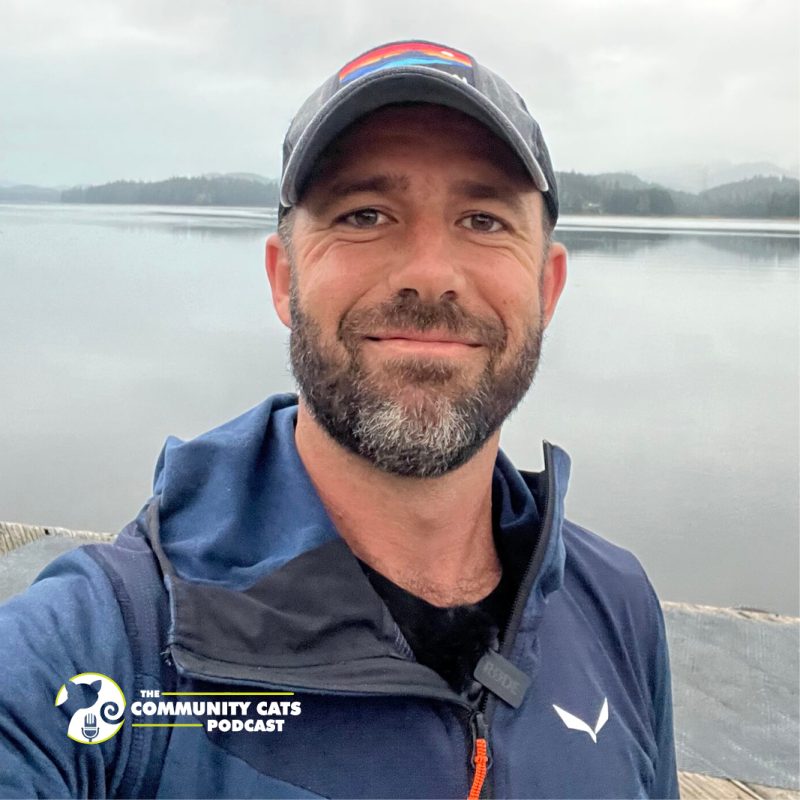
Bird TV: A New Hobby for Your Cat (and You!)
February 12, 2021
Center for Contemporary Sciences:Working Toward an Alternative to Animal Testing
February 18, 2021
“I feel so strongly about this idea of attention management, instead of time management, because I can’t really manage time, time marches on no matter what I do.”
Listen to Episode #391 Now
This episode is sponsored in part by Tamadori and Doobert.com.
Maura Nevel Thomas is an award-winning international speaker, trainer, and author on individual and corporate productivity and work-life balance, and the most widely-cited authority on attention management. Maura has trained thousands of individuals at hundreds of organizations on her proprietary Empowered Productivity™ System, a process for achieving significant results and living a life of choice. She is a TEDx speaker, successful entrepreneur, and author of Personal Productivity Secrets and Work Without Walls.
In this episode, Stacy and Maura talk tips for working remotely including managing attention, email best practices, guidelines for using different communication tools and apps, and how leaders can create a healthy and efficient culture at work.
They also chat about Maura’s book Work Without Walls, which takes her previous book on personal productivity a step farther, helping leaders and managers create a productive environment for whole teams and organizations. Maura also has a series of bite-sized books coming out over the next year or two whose goal is to “spark impact in just one hour.” These will be short reads, giving specific information in an hour or less, and they will break her Empowered Productivity™ System into individual components.
To find out more, get free resources, or buy her books you can visit Maura’s website. To get access to Maura’s on-demand training on empowered productivity, visit this website and use code SNEAKPEEK for a discount.
Read Episode #391
Kristen Petrie [00:00:02]
You've tuned in to the Community Cats Podcast. Ready? Let's go.
Stacy LeBaron [00:00:13]
Welcome to the Community Cats Podcast. I am your host, Stacy LeBaron. I've been involved helping homeless cats for over 20 years with the Merrimack River Feline Rescue Society. The goal of this podcast is to expose you to amazing people who are improving the lives of cats. I hope these interviews will help you learn how you can turn your passion for cats into action. Today we're speaking with Maura Nevel Thomas. Maura is an award-winning international speaker and trainer on individual and corporate productivity and work-life balance, and the most widely cited authority on attention management. Her proprietary Empowered Productivity System has been embraced by the likes of the U.S. Army, L'Oréal and Dell. She's a TEDx speaker, founder of Regain Your Time, author of three books and was named a top leadership speaker in Inc. magazine. Maura is frequently featured in major business outlets, including Business Insider, Fast Company, and the Huffington Post and she's also a regular contributor to both Forbes and the Harvard Business Review, with articles that are viewed over a million times. Maura, I'd like to welcome you to the show.
Maura Nevel Thomas [00:01:21]
Thanks for having me, Stacy. I'm happy to be here.
Stacy [00:01:23]
So before we dive into all things productivity and virtual offices and all of this stuff on how we can all get our work done in an organized and efficient way, first I want to find out a little bit more about how you fell in love with cats.
Maura [00:01:40]
Yes, you know, I always wanted a pet when I was young but my mom is allergic so we never had one. So when I went to college, we got a cat. As soon as we moved out of on-campus housing, my roommates and I, we got a house. We adopted a cat and then I got my own apartment after college and I adopted a cat named Misha. And in another place I lived in, there was a feral cat who had babies and so I trapped the mom, had her fixed, adopted out the babies and then I built it into my lease because it was a property that I rented out. I built it into my lease that the tenant, any tenants, had to feed mama cat because she was still feral but they had to put food and water out for mama cat. So, I've been a cat lover all my life, really, an animal lover.
Stacy [00:02:35]
Well, I appreciate you sharing that story with us. I got my first cat when I was in college too so I think that's always a good time. Some folks think it's not the greatest time to get a cat when you're in college, but I thought it was a wonderful time and I had Rusty for a long time. And I also, later on in life, had a cat named Misha too so lots of parallels. So thank you for sharing. My Misha was actually an orange kitty, which is, they’re usually male and she was all orange but a female so she was kind of unique that way but I loved her. She was great. And I'm sure you loved Misha too. So thank you so much for joining us today. I know when we first talked to you we were like, oh, you know, what can I bring to this conversation because you're not necessarily in the animal welfare space. You are a productivity specialist and a management specialist and you really understand so many different things about the workings of businesses and whether we like it or not in animal welfare, we are businesses, even if we have no employees. If we're working for a nonprofit and nonprofit is a business, and there's a lot of communication, a lot of work that needs to be done. And, you know, before we jump into your book Work Without Walls, which is a book I keep on my desk and I have so many sticky notes and so many pages folded over in it with tips and tricks. I just think it's a fantastic book for folks that do work virtually and I believe in the nonprofit space we all work virtually. If you are out trapping cats, you're communicating with your team, you're texting, that's a virtual event. You know, what sort of tips would you give organizations that pretty much have like ninety percent of their operations outside of a central building?
Maura [00:04:14]
It's a challenge when this new remote work situation that we have been thrust in or a lot of people were thrust in is a real challenge for people who were not used to working remotely, but honestly, I believe that your productivity comes not from where you work, but how you work. And so I think that almost all of the same problems that people have, challenges with their productivity,that they have in the office still exist outside the office right? In the office it's a big complaint that people are always dropping in on you, hey, do you have a minute? But if you live with anybody else, you have the same situation at home or wherever else you work, even if you are outside trapping cats. Being efficient with your attention and with your time is super important because then you can get more of your most important work done. In this case it's really important work because it's the life of a cat.
Stacy [00:05:09]
Yeah, and it's funny to, you know, you're talking about the interruptions and the distractions and that kind of thing. And one of the things that I took away from your book a lot was being respectful of folks time and, you know, if you're not sort of on
the clock to respect that. And to also, I'm always challenged by managing the email inbox and I really liked your idea around putting labels on emails, to determine, you know, whether their urgent or they're not urgent. And also thinking before sending. And so, really understanding how important is it for me to send this email to this person. Is it something that could wait and be layered in with something else? Or is it something that I don't even need to send at all? And you even talked about the scenario where people go, hey, thanks for sending that, you know, and like why is that response necessary? So, is there some certain like email etiquette that you can share with us to help make us not have such an overflowing inbox?
Maura [00:06:10]
Yeah, one tip. Just to underscore the point that you made about subject lines. The more information you can give somebody in a subject line while still being brief and concise, and recognizing that a lot of people are reading from their Smartphones, which is a really small screen, but if you can start an email, especially if action is required, if you can put that in your subject line, right? Action required or response requested and then in the body of the message, give them a deadline. If you could respond by end of day tomorrow, that would be great or whatever. Those can be really, really, helpful things for people who are trying to sort of triage what comes into their inbox. So knowing that this requires something of you or I'm requesting something of you is helpful. And another tip is to be very specific with what you want. I've worked with a lot of nonprofits and especially when nonprofit staff are communicating to the board. I find that the staff is super respectful because they appreciate, you know, the commitment of the board members and are really aware of their time, want to be respectful of it. And so as a result, they tend to be a little bit too circumspect in their emails. So things like if there might be a way that you might be able to think of that you could maybe help us with this initiative, we would really appreciate it. And you know as a board member myself, I would always write back and say I appreciate your politeness, I appreciate your respect for my time, but just tell me specifically what you want me to do. And then the email that came back would be something like if you could just email ten of your friends and ask them to donate fifty dollars, that would be awesome. It's like, yes, yes, I can do that, right. That is very clear. I can add it to my to-do list, I could probably do it right now in three minutes. The more direct and specific you can be about what you want from people, the more you help them to deal with that overwhelming amount of information that we get in our email inboxes.
Stacy [00:08:20]
What are your thoughts about the tools like Slack or some organizations use, like a crew app or something like that. Is that just redirecting the messages or is that actually something that would help us in our organizations?
Maura [00:08:37]
Really, as with many other things, it's not the app itself, it's the implementation. So the biggest mistake I see organizations make when they choose a new app, whether it's some sort of team collaboration tool like Slack or Teams or whether it's some sort of project management tool, or a customer relationship tool, CRM, right? Regardless of what the tool is, a lot of organizations roll it out but then they don't provide any guidelines. So, for example, with a team collaboration tool, well, before you rolled out the team collaboration tool, you had, often times you would have an office phone, you would have a desk, a cellphone and then a lot of people have started now to get work text messages on their personal cell phone. So there's three communication tools. Then you have email, there's a fourth, and then you roll out a tool like Teams or Slack and that has chat and so now you have a fifth way and organizations never provide any guidelines that say, this is how we use each tool, right? So for example, if it is a routine request that is not related to a group project and it's not an emergency or timely, then email is the way to do that. If you have a request that is more urgent or timely, text or phone is a better way for that. And if you have communication that is related to say a group project, then a chat in Slack, for example, that's when to use that situation. So those are just examples and every organization is different but providing some of those guidelines because otherwise, every time you roll out a new communication tool, I don't know, are you more into chat or email or voicemail? So then you end up, you know, getting a voicemail that says check your Slack or you get a text that says, check your email, right? And so then it just increases the volume of the communication and it doesn't make anybody more efficient.
Stacy [00:10:36]
I agree with you on that. It really annoys me when I get an email saying you need to go over and check what has landed over here, you know, even from like Facebook notifications and those kinds of things. It's like, ah, do you really need to tell me to go over there and check what's happening on Facebook right now when I'm in the middle of a project? So with that being said, I would assume but, you know, share your thoughts on this. There are things like, you can pause your inbox so that then you can get work done. I mean, are you a fan of sort of that carving out periods of time to really get focused work done?
Maura [00:11:10]
Oh, one hundred percent. Email was never intended to be a synchronous communication tool meaning at the same time, right, simultaneous. You message me now and I respond to you now. That is not the way that email is supposed to be used and organizations who are doing it that way, I would say you're doing it wrong and we need a reset. And it's part of the reason that I feel so strongly about this idea of attention management versus time management because I can't really manage time. Time marches on no matter what I do. And when I ask people, how, what does it mean to you to manage your time anyway? What do you physically do to manage your time? And most people tell me that they make appointments with themselves on their calendar. Well, that's great but if you decide that at nine o'clock, you're going to do that report and at nine o'clock that report rolls around, but, every two minutes, you're checking the new email that comes in, then the time is going to pass but that report won't be done at the end of the time that you had set aside. So controlling your attention is critical and you absolutely cannot control your attention if you can't control your technology. And so absolutely pausing your inbox or working in offline mode. If you need to deal with messages that are in your inbox but new ones keep coming in, you have to keep those new ones from coming in, in order to deal with the ones that are already there. So, yeah, pause or work in offline mode and carve out that time for yourself. If people expect an immediate response from you, it might be because you typically give them an immediate response. And so, if you reset your behaviors then people often will reset their expectations.
Stacy [00:12:54]
Do you recommend that people actually set, like I'm going to check my emails between one and two and four and five, or some people say that you tend to be more productive in the morning, so you should do your solid work in the morning? And I don't necessarily think of checking emails as like your solid work, and maybe designating certain, almost, office hour times for email check, do you think that that is valuable? And should folks be tracking their time and trying to understand how they're using their time?
Maura [00:13:26]
I think tracking your time can be useful as an experiment for like a week or two because I think it can open your eyes to where your time really is going or where your attention is really going. One of the biggest mistakes that people make with their email is that they, their quote unquote process for managing email is what I call skim and skip. It means I check it all the time and I'm looking for only the most important things or the fastest things, or the things that I can immediately delete and everything else, I'll get back to it later. But then, the problem is later never comes because they don't set aside time. Well then when is later? And so, absolutely, I think that you need to recognize that email for most of us is work. I hear people say I could get so much work done if only it weren't for email. And I understand the sentiment because we have other stuff to do that isn't email but for most people their work dries up if email goes away because so much of our work is done by email. And if the emails you get are related to your work in any way, from your boss, from your colleagues, from your vendors, from your clients, then that is work. And so you have to set aside time every day to do that work. Now, I don't recommend telling people exactly when those times are because then if you tell somebody I just check my email between eleven and twelve and between three and four, then every single person is going to be waiting for an answer from you at 11:01 or 4:01, right? Or 3:01. And so, as soon as you don't respond, then you've sort of let people down, right? So I recommend if you need to reset those expectations, I recommend a line in your signature that says something like I only check email infrequently throughout the day or periodically throughout the day or some language like that. However, if your message is of a more urgent or timely nature, please feel free to call me or whatever. However, you want them to behave, right? So that sets those expectations that says I'm not going to get back to you immediately but I will get back to you soon. So yes, you do need to leave time in your day. That was a long answer to a short question.
Stacy [00:15:41]
Let's talk about the book Work Without Walls. Can you share a little bit about how it came about and some of the other key points from the book?
Maura [00:15:51]
Yeah, absolutely. My first book was called Personal Productivity Secrets and that was a book to help individuals better manage their own personal productivity and attention management. But as my career progressed, I started working with a lot of leaders and I actually speak to leadership groups about, I don't know forty times a year, through an organization called Vistage and Vistage is for senior executives. And so I started speaking to these leadership groups and I realized that a lot of this knowledge and experience that I had in the productivity field could be applied organizationally in a way that I hadn't really thought about until I started having these conversations with these leaders. And so that’s how Work Without Walls was born. And where Personal Productivity Secrets is about helping individuals improve their own productivity, Work Without Walls is about how helping leaders and managers create a productive environment for their teams and their organizations.
– Start mid-roll advertising-
Stacy [00:16:56]
Your cat is your faithful companion. Always there to give you comfort and love when you need it most. So why not give them the same comfort and love with CBD oil designed just for cats? Tamadory Collection is a family-run business based out of greater Boston with a love and passion for cats. You can read more about their exciting new product Tamadory CBD Oil for Cats on their website at www.tamadorycollection.com. Tamadory CBD Oil for Cats is perfect for anxious cats who need relaxation support to promote calm, cats who suffer from health concerns to help boost immune health, older cats that have slowed down or suffer from joint discomfort who need to feel and move better and young cats to support the longest healthiest life. Ready to try Tamadory CBD Oil for Cats today? Enjoy ten dollars off your first bottle with code COMMUNITY CATS. So why wait? Try Tamadory Premium Cat CBD today for a happier healthier cat tomorrow and for years to come.
Stacy [00:17:56]
By now, you know how powerful the Doobert software platform is facilitating everything from transport to fostering with just a few clicks but did you know that the team at Doobert also provides consulting and custom software development for your organization's needs? The team at Doobert has extensive experience in website design, SEO strategies, mobile application development and even advanced capabilities involving integration to social media and text messaging. Big or small, the team at Doobert can do it all. And because Doobert operates as a social enterprise, all of the revenue from their consulting services goes back into developing even more innovative and life-saving solutions for animal rescues around the world. So if you are planning to increase your digital presence online through a new website or some SEO strategies, or if your organization is looking for an experienced web development team to support your operations, look no further than the team at Doobert. Reach out to Chris today at Chris@doobert.com and he'd be glad to discuss what you're trying to accomplish and how they can help.
Stacy [00:19:02]
Community Cats Podcast is excited to announce a brand new event this year. The online United Spay Alliance Conference. United Spay Alliance or USA is a non-profit nationwide source for affordable, accessible, and timely spay/neuter services, education and policy. Together with USA, we will be bringing you amazing content on spay/neuter work, starting on Friday, February 26th and running through Sunday, February 28th, 2021. Conference topics include recruiting veterinarians and meeting rural needs, a Covid-19 panel, how to start a spay neuter clinic including explanations of the various clinic models, transport models, how to make spay/neuter a priority in your community, grant making for spay/neuter, how to work with animal control and your board of health and many, many more. To see the full list of topics and speakers and to learn how you can register visit communitycatspodcast.com. We're excited about this new offering and we hope you will be too.
-End mid-roll advertising-
Stacy [00:20:05]
And it sounds like you are putting together a new series of books that are coming out in 2021. You want to share a little bit about that?
Maura [00:20:13]
Yeah. So Personal Productivity Secrets, I wrote in 2011. It came out in 2012. It details my, what I call a workflow management process, which is a collection of habits and behaviors for how you manage all of the details of your life. And so in that system that's detailed in Personal Productivity Secrets is called the empowered productivity system. And so as I started working on the next release of Personal Productivity Secrets, the way that the world has evolved, everybody's attention, spans are much shorter, people have a harder time reading short books. So I partnered with the publisher called Sourcebooks and Sourcebooks has a line of books that they call Ignite Reads. And the tagline for Ignite Reads is “sparking impact in just one hour”. And so the idea is that it's a short book, it's designed to give you the specific information you need, very specific action steps, but you can consume it in an hour or less. It's hardcover. It's very colorful. It's a joy to hold, it makes a great gift. So what I did was I broke down the empowered productivity system into components and Attention Management was the first component and that was my latest book came out last year. In January of 2021 will be the second book in the series which is the component of empowered productivity that I call Action Management. So how do you manage all your responsibilities in your projects in your tasks? And the title of that book is From To Do To Done and the rest of the components of empowered productivity will be coming out about every six months for the next two years.
Stacy [00:21:57]
Fantastic. So that will be probably about how many books is that then, like four or five?
Maura [00:22:03]
I think there's going to be four books in the series in total. After Action Management is going to be Communication Information and Meeting Management. That will be the next book in the series and what I think will be the last book in the series. There might be another book on work-life management. And then there's going to be sort of a more condensed version of Work Without Walls. It'll be about culture change management for organizations. And that I think will be the last book in the series, at least so far.
Stacy [00:22:37]
When an organization does adapt to some of the suggestions that you have in your various books and when you do your consulting, you know, you just mention the word culture, culture and business, how have you seen the culture change?
Maura [00:22:52]
So many ways. The thing I love about Work Without Walls and when I deliver that content to leadership teams, it's so impactful because what people don't realize, what a lot of leaders don't realize, is that the culture of an organization is created by the behaviors of the people in the organization but nobody more so than the leaders. The team models the leader behaviors. And so the leaders in the way that they behave have a huge impact on the culture of the organization and whether or not it's a good place to work, in many ways. And so, what I find is that leaders come to me who want to make their organizations better places to work. And because what's happening is that cultures have become so demanding, right? The pace of business, especially in nonprofits where, which are usually chronically overworked and understaffed, it can feel like a really, not damaging is not the right word, demanding is the word, right? A really demanding work environment where there's oh my gosh, there's so much to do and I have to be always connected. And burnout is a big problem, that leads to burnout, and burnout is a big problem especially in the nonprofit community. So, recognizing things like how many hours are people working and do they have the skills they need to manage their volume of work? And the answer in most of those cases is no because these skills are not taught in school. But just little things like if you’re a boss and you're sending emails at eleven o'clock at night, it doesn't matter how many times you tell your team oh, I don't expect you to work late at night. If you're working, they’re going to work. If you're sending them emails, they're going to be checking for those emails. And so it creates this always on culture, and so many leaders don't realize those simple things like, well, I just did it because I was thinking about it, you know, it was on my mind before I went to bed. But people are going to do what you do, not what you say. So it has a huge impact on the culture.
Stacy [00:24:57]
Yeah, I agree with that. That's something that over being involved in this industry for like the last twenty years, that I've tried to become somewhat more respectful of and appreciative of some tools like Boomerang and some of those, the delay mailing system. So yeah, I might, on a Sunday morning at eight a.m., want to clean out my inbox. Great. Wonderful. I've dedicated that time for it. That doesn't mean that the other person on the other side has to receive that email until they get in at Monday, and I would schedule it for like eleven a.m. on Monday. So, I wouldn't hit them right away, you know, something like that. Just try and do things that try to be respectful for others while understanding that, you know, I might want to work in a different way. There are so many people in this, especially those that are volunteering. So, you've got board members that need to respond to stuff and they're responding at night after work when technically, the office is closed. So they're responding, but then it's hard not to want to respond at night and have to feel like you're on. I totally appreciate that and understand that there were many nights where I worked late and I'm honestly more of a morning person. And so I have to I have to explain to people, you know, by the time eight p.m. rolls around, I could be emailing gobbledygook because I'm just not very coherent but I'll be very coherent at six a.m., where it's totally the other way around for other people. So it's just trying to maybe use some tools to try and help enable the communication in the best way possible too because I may not craft a well-written email at nine o'clock at night either and I may say something in the email that I really didn't mean to say. So you have to be careful about that. And that's the last thing I'm going to actually ask you about too is, like, when people do send emails around, sometimes things are written in those emails that aren't necessarily appropriate. And I've always had a mindset of whatever you write in the email, it should be okay to hit the front page of a newspaper and understanding that. Is etiquette something else that you cover in your workplace culture?
Maura [00:26:54]
I would call it more best practices than etiquette but I absolutely agree with you that it's so easy to misunderstand something in an e-mail. Your tone of voice. I mean, emojis only get you so far. And so I agree with your statement about the front page of a newspaper. What I talk to organizations about is more paying attention to the volume of communication that you are creating. It's so easy to send an email that we send, sometimes we just send way too much information. And I don't mean that it's inappropriate necessarily but just too much. It's like, I didn't need to know every little thing. And so recognizing that every message you send creates a burden for somebody else. Whether it's a minute or thirty seconds or five minutes that they have to read it and see it. I tend to not to send thank you emails, right, those messages that just say thanks. And I tell people that I interact with a lot, I am showing my appreciation by not creating one more message that you have in your inbox. So just to know, I understand that sometimes it can be useful to know that somebody received it but email communication these days, especially if it's somebody that you message frequently, it's pretty reliable. I mean, there are spam filter challenges sometimes but most of the time if you send a message, somebody else is going to receive it. So, I think that those thank you messages it can be agreed we don't need that. If you do want somebody to confirm, you can put it in the message, please confirm receipt. And in that case, I could just say, you know, got it, thank you, but thank you to every message just creates a real burden.
Stacy [00:28:45]
I agree. I agree. So Maura if folks are interested in finding out more about the work that you do or purchasing one of your books, how would they go about doing that?
Maura [00:28:55]
Yeah, thanks for asking. You can learn everything you need to know and get all kinds of free resources, including a free chapter of all of my books at MauraThomas.com. I also have an offer for your readers, anybody who would like to learn the empowered productivity system. Certainly I do live, on-site and virtual training events but I also have an on-demand program that lives at empoweredproductivitytraining.com and your listeners can use the code SNEAK PEEK to get a discount of fifteen percent off of that.
Stacy [00:29:34]
Fantastic. Excellent. Well, thank you so much that's a treat. Thank you for sharing that, I really appreciate that. Is there anything else you'd like to share with our listeners today?
Maura [00:29:42]
Aside from nonprofit resources that, I'm always open to hear from nonprofits because you know that you do important work and your funds are limited. So if there's any way I can help feel free to email me and tell me that you work for a non-profit and I will do my best to support your important work.
Stacy [00:30:00]
Are there any nonprofits that you are supportive of or on the board of that you'd like to give a shout-out to today?
Maura [00:30:06]
One that is near and dear to my heart is called the Girls Empowerment Network and it helps young girls find their voice and develop their own self efficacy. And I've also done some work for PAWS, that a lot of your listeners might be familiar with. I spoke at one of their conferences, a few years ago. So yeah, there's so many people doing important work. It's impossible to name them all.
Stacy [00:30:40]
Maura, I want to thank you so much for spending time with me today. I really appreciate you being a guest on the show and I hope we'll have you on again in the future.
Maura [00:30:47]
Thanks for having me Stacy, it was my pleasure.
Stacy [00:30:49]
That's it for this week. Please head over to Apple podcasts and leave a review. We love to hear what you think, and a five-star review really helps others find the show. You can also join the conversation with listeners, cat caretakers, and me on Facebook and Instagram. And don't forget to hit follow or subscribe on Spotify, Apple podcast, Google podcast, YouTube, Stitcher or wherever you listen to podcasts, so you don't miss a single show. Thanks for listening and thank you for everything that you do to help create a safe and healthy world for cats.
Kristen Petrie [00:31:20]
The Community Cats Podcast would like to take this opportunity to shout out a few of our virtual event sponsors. Perhaps you attended the Online Cat Conference in January. The incredible content and educational experience was brought to you in part by the Vermont Humane Federation, Humane Network, Best Friends Animal Society, the Massachusetts Society for the Prevention of Cruelty to Animals, and the Winn Feline Foundation. If you or your organization would like to sponsor content that you care about and that helps save feline lives, go to www.communitycatspodcast.com/sponsor to see sponsorship opportunities for upcoming events and to find out how you can turn your passion for cats into action.


